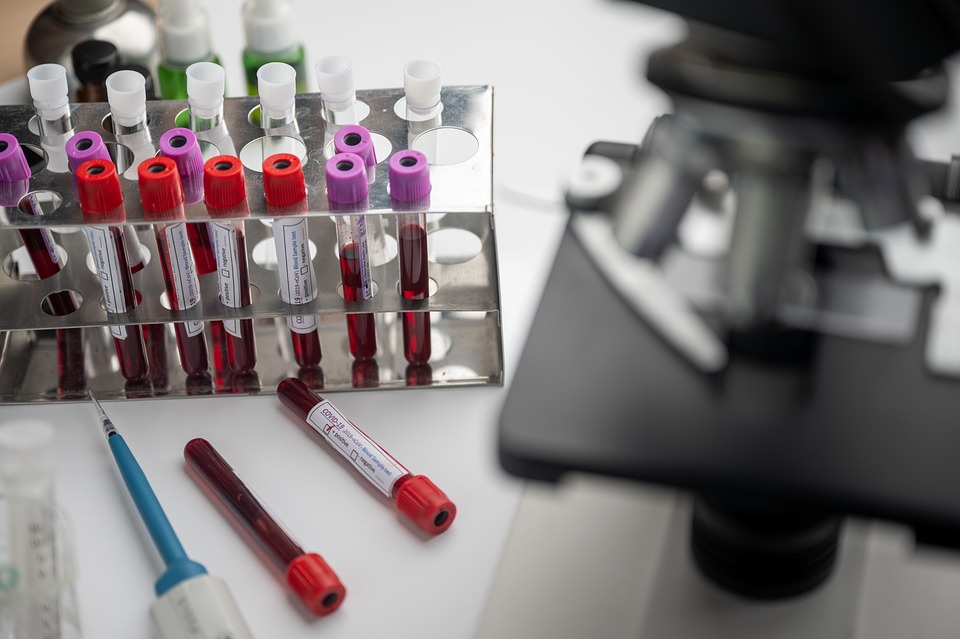
Multiple Sclerosis FAQ
- What is Multiple Sclerosis (MS): MS is a chronic, autoimmune disease that affects the central nervous system (CNS), including the brain and spinal cord. It occurs when the immune system mistakenly attacks the protective covering of nerve fibers (myelin), leading to communication problems between the brain and the rest of the body.
- What are the Symptoms of MS: Common symptoms include fatigue, difficulty walking, numbness or tingling, muscle weakness, problems with coordination and balance, vision problems, and cognitive impairment.
- How is MS Diagnosed: Diagnosis often involves a combination of medical history, neurological exams, magnetic resonance imaging (MRI) scans, and sometimes lumbar puncture (spinal tap) to analyze cerebrospinal fluid.
- What Causes MS: The exact cause is unknown, but it is believed to involve a combination of genetic and environmental factors. There may be a link to viral infections and other triggers that lead to an abnormal immune response.
- Is MS Hereditary: While there is a genetic component, MS is not directly inherited. Having a family member with MS may increase the risk, but the majority of people with MS have no family history of the disease.
- Can MS be Cured: There is no cure for MS, but there are various treatments available to manage symptoms, slow disease progression, and improve quality of life. Treatment plans are individualized based on the type and severity of MS.
- What are the Different Types of MS: MS can be categorized into relapsing-remitting MS (RRMS), secondary progressive MS (SPMS), primary progressive MS (PPMS), and progressive-relapsing MS (PRMS). RRMS is the most common form.
- How does MS Progress Over Time: MS progression varies among individuals. Some people may experience periodic relapses followed by periods of remission, while others may have a gradual progression of symptoms without distinct relapses.
- Can MS Affect Pregnancy: Many women with MS experience a reduction in symptoms during pregnancy, but there may be an increased risk of relapse in the postpartum period. Most disease-modifying treatments are not recommended during pregnancy.
- What Lifestyle Changes Can Help Manage MS: Regular exercise, a balanced diet, stress management, and adequate rest can contribute to overall well-being for individuals with MS. Avoiding smoking and excessive alcohol consumption is also advisable.
- Are There Support Groups for People with MS: Yes, there are numerous support groups and organizations that provide resources, information, and emotional support for individuals with MS and their families.
- Can MS Cause Mental Health Issues: MS can be associated with depression, anxiety, and other mental health issues. Individuals with MS need to discuss any mental health concerns with their healthcare team.
- How Does MS Affect Vision: Optic neuritis, inflammation of the optic nerve, is a common symptom of MS that can cause blurred vision, eye pain, and even temporary vision loss. Visual disturbances often improve over time.
- Is MS Fatal: MS itself is usually not fatal, and most individuals with MS have a normal life expectancy. However, complications and secondary conditions can impact overall health.
- What Research is Being Done for MS: Ongoing research is focused on understanding the causes of MS, developing new treatments, and improving the quality of life for individuals with the disease. Advances in immunology and neurology continue to inform MS research.
- What is the Definition of a Relapse: A relapse, also known as an exacerbation, flare-up, or attack, in the context of multiple sclerosis (MS), refers to the sudden appearance of new symptoms or the worsening of existing symptoms. These episodes are typically temporary and can last for varying durations, ranging from days to weeks. A relapse is indicative of an inflammatory process occurring in the central nervous system (CNS), which includes the brain and spinal cord.
- What is an MS Hug: An “MS hug” is a term used in the multiple sclerosis (MS) community to describe a sensory symptom that feels like a tight band or girdle around the chest or torso. This sensation is caused by spasms or contractions of the muscles between the ribs, which can result from the impact of demyelination on nerve signals. The MS hug can vary in intensity, from a mild squeezing sensation to more severe discomfort. While the name may sound benign, the experience can be distressing for individuals with MS. Treatments for the MS hug may include muscle relaxants or other medications aimed at managing neuropathic pain. As with any symptom of MS, individuals need to discuss their experiences with healthcare professionals to determine the most appropriate management strategies for their specific situation.
- Can MS Sufferers Work and Maintain Employment: The ability to work with MS varies widely among individuals and depends on factors such as the type and severity of symptoms, the nature of the job, and the individual’s overall health and wellness. Some people with MS experience periods of relapse and remission, and during periods of remission, they may be fully capable of working.
- Can an MS Sufferer Have a Caregiver and Be Able To Go To Work: Individuals with multiple sclerosis (MS) can have a caregiver and still be able to work. The ability to work with MS varies greatly among individuals, and having a caregiver can provide valuable support in managing daily activities and tasks. Caregivers may assist with various aspects of daily living, such as transportation, meal preparation, and personal care, allowing the person with MS to focus on work. Individuals with MS and their caregivers need to work closely with healthcare professionals and, if applicable, human resources departments to create a supportive environment that allows for both employment and caregiving responsibilities.
- Is Numbness in the Toes and Thighs Classed as a Relapse? Numbness in the toes and thighs can be a symptom of multiple sclerosis (MS), and it may or may not indicate a relapse. A relapse, also known as an exacerbation or flare-up, is typically defined as the appearance of new symptoms or the worsening of existing symptoms lasting for at least 24 hours and occurring in the absence of fever or other identifiable causes. If the numbness in the toes and thighs is a new or worsening symptom that lasts for a significant period and meets the criteria for a relapse, it may be considered as such.
- Can You Suffer From Incontinence If You Have MS: Yes, urinary incontinence can be a symptom of multiple sclerosis (MS). MS can affect the nerves that control the bladder and the muscles involved in urinary function. As a result, individuals with MS may experience various urinary issues, including incontinence.
- Can You Suffer From Cognitive Impairment, If You Suffer From MS: Yes, cognitive impairment is a common symptom of multiple sclerosis (MS). While MS is often associated with physical symptoms such as numbness, weakness, and difficulty walking, it can also affect cognitive functions. Cognitive impairment in MS can manifest as difficulties with memory, attention, information processing speed, problem-solving, and other aspects of cognitive function.
- Is OCD Associated With MS: The relationship between MS and psychiatric conditions is complex and may involve various factors, including the impact of neurological changes, the stress of coping with a chronic illness, and the influence of immune system dysfunction. MS can affect the central nervous system, leading to both physical and psychological symptoms. Some studies suggest that individuals with MS may be at an increased risk of developing anxiety disorders, including OCD-like symptoms. However, the exact nature of this relationship is still an area of ongoing research, and not everyone with MS will experience psychiatric symptoms. Frequency of obsessive-compulsive disorder in patients with multiple sclerosis: A cross-sectional study – PMC (nih.gov)
The specific criteria for defining an MS relapse include:
- Duration: Symptoms must persist for at least 24 hours, and there should be a noticeable change in neurological function.
- Absence of Fever: The symptoms should not be associated with a fever or any other illness that could mimic an MS relapse.
- Exclusion of Other Causes: Other potential causes of symptoms, such as infections or medication side effects, should be ruled out.
Relapses can vary widely in terms of severity and the specific symptoms experienced. Common symptoms during a relapse may include increased fatigue, difficulty walking, numbness or tingling, muscle weakness, vision problems, and problems with coordination.
Individuals with MS need to communicate any new or worsening symptoms to their healthcare team promptly. The management of relapses often involves treatment with corticosteroids to reduce inflammation and speed up recovery. Additionally, disease-modifying therapies may be prescribed to help prevent future relapses and slow the progression of the disease.
Factors such as stress, fatigue, and other health conditions can contribute to temporary symptom exacerbations. Regular communication with a healthcare team is crucial for individuals with MS to monitor and manage their symptoms effectively. If you experience new or worsening symptoms, it’s recommended to discuss them with your healthcare provider to determine the appropriate course of action.
Incontinence
Different types of urinary incontinence can occur in people with MS:
- Stress incontinence: This occurs when there is increased pressure on the bladder, such as during coughing, sneezing, or laughing.
- Urge incontinence: This involves a sudden, strong urge to urinate that is difficult to control.
- Overflow incontinence: In this type, the bladder doesn’t empty properly, leading to constant dribbling or leakage.
- Mixed incontinence: Some individuals may experience a combination of stress and urge incontinence.
It’s important for individuals with MS who are experiencing urinary symptoms, including incontinence, to discuss these issues with their healthcare provider. There are various management strategies and treatments available to help address urinary symptoms in people with MS, including medications, pelvic floor exercises, and lifestyle modifications. A healthcare professional can provide guidance and tailor interventions to the specific needs of the individual.
Cognitive Impairment
The severity and specific cognitive challenges can vary widely among individuals with MS. Some people may experience mild cognitive changes that do not significantly impact their daily lives, while others may face more pronounced difficulties that affect work, relationships, and overall quality of life.
Cognitive impairment in MS is thought to be related to the impact of demyelination and damage to nerve fibers in the central nervous system, particularly in areas of the brain responsible for cognitive functions.
Individuals with MS need to communicate any cognitive changes they experience to their healthcare team. Neuropsychological assessments may be used to evaluate cognitive function, and interventions such as cognitive rehabilitation, medications, and lifestyle modifications may be recommended to help manage cognitive symptoms. Early detection and intervention can contribute to better outcomes in managing cognitive challenges associated with MS.
Conclusion
In such cases, it’s important to contact a healthcare professional, such as a neurologist, who can assess the situation, conduct appropriate tests, and determine whether intervention, such as corticosteroid treatment, is necessary.
Further Reading
- https://disabledentrepreneur.uk/category/ms/
- Frequency of obsessive-compulsive disorder in patients with multiple sclerosis: A cross-sectional study – PMC (nih.gov)
- OCD and Multiple Sclerosis (MS): What to Know – Positive Mind Care
- https://disabledentrepreneur.uk/leg-numbness-ms/
#ms #multiplesclerosis #autoimmunedisorder #mssupport #msfaq #neurologist #neurology #msrelapse #corticosteroids #modifyingtherapy #lemtrada #listeriadiet #immunesuppress
ADVERTISEMENTS
ONLINE THERAPY UK & OVERSEAS
UK ONLINE DOCTORS
CONTENT WRITING – PROOFREADING – GHOSTWRITING






















